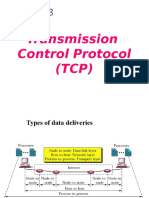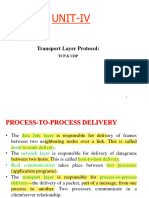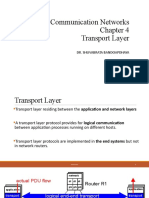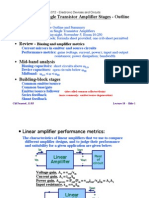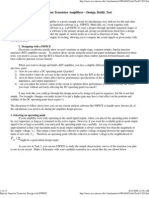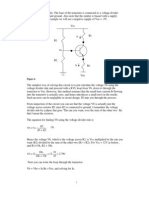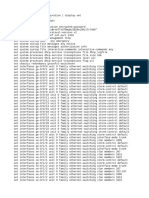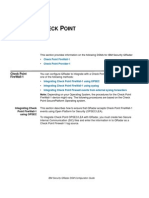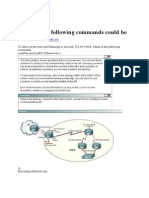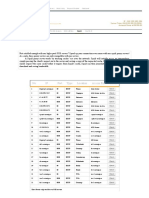0% found this document useful (0 votes)
167 views57 pagesDataCommChapter 6 Part 2
The document discusses three transport layer protocols: UDP, TCP, and SCTP. [1] UDP is the simplest protocol and does not provide reliability, while TCP is more complex and provides reliable, ordered delivery through connection establishment and flow/error control. [2] SCTP is a newer protocol designed for multimedia applications. [3] The document then provides details on UDP, including its connectionless nature, use of ports and checksums, and applications. It also describes TCP connections, segments, flow control using sliding windows, and reliable data transfer through three-way handshaking.
Uploaded by
dominggoCopyright
© Attribution Non-Commercial (BY-NC)
We take content rights seriously. If you suspect this is your content, claim it here.
Available Formats
Download as PDF or read online on Scribd
0% found this document useful (0 votes)
167 views57 pagesDataCommChapter 6 Part 2
The document discusses three transport layer protocols: UDP, TCP, and SCTP. [1] UDP is the simplest protocol and does not provide reliability, while TCP is more complex and provides reliable, ordered delivery through connection establishment and flow/error control. [2] SCTP is a newer protocol designed for multimedia applications. [3] The document then provides details on UDP, including its connectionless nature, use of ports and checksums, and applications. It also describes TCP connections, segments, flow control using sliding windows, and reliable data transfer through three-way handshaking.
Uploaded by
dominggoCopyright
© Attribution Non-Commercial (BY-NC)
We take content rights seriously. If you suspect this is your content, claim it here.
Available Formats
Download as PDF or read online on Scribd
/ 57







































